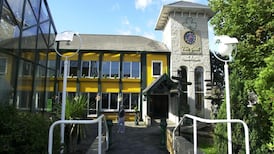Anniversaries can, as most of us know, be rather bittersweet events, with the passing of another year almost always bringing with it a twinge of nostalgia for what has gone by.
On some happy occasions, however, the arrival of that annual date can offer greater reason for celebration than we might expect. And so it could be this year, on the third anniversary of the launch of the Special Savings Incentive Accounts (SSIAs), and the second anniversary of most people actually taking them out.
This time 12 months ago, the news was not so good, at least for those SSIA investors who chose to take out equity-based rather than deposit accounts. In most such cases, the value of their savings was lower than it would have been if they had elected to steer clear of the stock markets.
In fact, the losses on some equity-based SSIAs were so severe that they wiped out the 25 per cent Government contribution that made the scheme so attractive in the first place.
Lest we forget, the generous Minister for Finance, Mr McCreevy, is giving us back one euro of our tax for each four euros we save on our own.
Given that most equity-based SSIA products were sold based on a standard industry-projected investment return of 6 per cent per annum before charges, the performance was doubly disappointing.
One year on, however, things have changed. A quick comparison of selected SSIAs taken out in April 2002 (the last and most numerous batch) shows that equity accounts are now more likely to be fatter than their deposit sisters.
The differentiation makes sense, given that the first years of the SSIA scheme coincided with a period of serious stock-market weakness while last year produced a bumper return.
The typical balanced fund invests about 70 per cent of its assets in equities, so when markets such as the ISEQ lost about 30 per cent of their value in 2002, most equity funds suffered. In 2003, markets recovered, with the ISEQ up 26 per cent at the end of the year, and the pan-European Eurostoxx 50 ahead by close to 15 per cent on December 31st.
While these gains will not automatically have filtered straight through to the SSIA funds (in part because the most popular ones also invest in cash and bonds), they will of course have had a positive effect for the 270,000 people who chose equity over deposit in 2001 and 2002. This accounted for about one in four of all SSIAs that were opened.
The positive market impact is best measured by comparing the current status of our equity SSIAs to their position at around the same time last year.
In most cases surveyed by The Irish Times (based on a maximum monthly contribution of €254 beginning in April or May, 2002), the happy news is that the funds have more than doubled in value over the past 12 months, with both the Government and personal contributions completely intact.
In the case of AIB/Ark Life's balanced equity SSIA, for example (one of the most popular equity SSIAs in the market), last year's value of €3,721 had risen to €8,217 last week.
This current value is based on 25 monthly contributions of €254 plus a total Government contribution of €1,587.
This means that the total gain on the combined contributions that was in place at the end of last week stood at about 3.5 per cent. In other words, although we are in the black, the 6 per cent per annum cited at the start of the whole process remains elusive.
This is the case for all of the products included in the survey, although some look to be coming a bit closer to the goal.
New Ireland/Bank of Ireland's core equity SSIA has, for example, gained about 8 per cent over its total contributions to date.
This balanced equity offering, which was among the biggest SSIA sellers when the scheme closed, would now be worth €8,585 on the basis of 25 full contributions. This compares with €3,820 at this point last year, with actual investment growth (as opposed to added contributions) accounting for €955 of this.
Canada Life's equity SSIA, which is held by fewer people, is doing better again, with gains of almost 10 per cent in place last week. This means that if you had made 25 monthly contributions of €254 to such an account, it would now be worth some €8,717. This time last year, it was worth just €3,687, thus leaving it "under water", or with negative returns when compared with the total of €4,126 that had been contributed by account holders and the Government at that time.
Irish Life's most popular equity SSIA, which was also among the best-sellers over the life of the scheme, is in a similar position, with an account based on 25 full contributions now worth €8,342, or about 5 per cent more than the combined personal and Government contributions. Hibernian's equity SSIA has also made a solid recovery.
The equity gains are perhaps best measured when placed beside the current value of full-contribution deposit SSIAs taken out at the same time. Figures supplied by the various providers show that, on balance, fixed-rate products are in a stronger position than variable accounts, with equity-based SSIAs worth more again. Bank of Ireland's variable deposit, for example, is now worth €8,113 based on 25 full contributions. This compares with €4,187 at this time last year. The bank's fixed offering, meanwhile, would now be worth €8,231, up from €4,196 last year. In both cases, the bank's most popular equity fund has generated a greater return.
The same situation applies with AIB and Irish Life & Permanent, which offers its equity SSIA through Irish Life and deposit options through Permanent TSB.
Additional Reporting: Brandon Glenn










